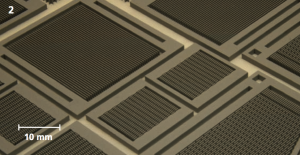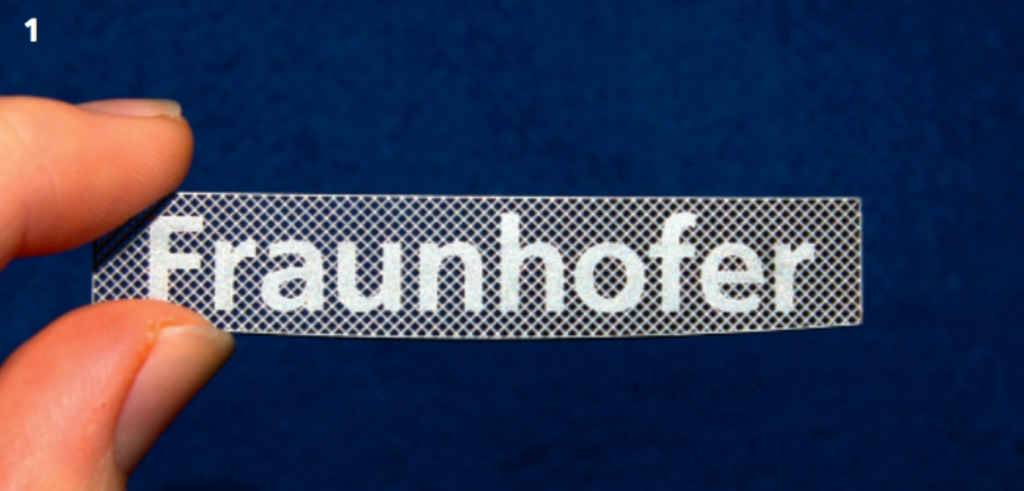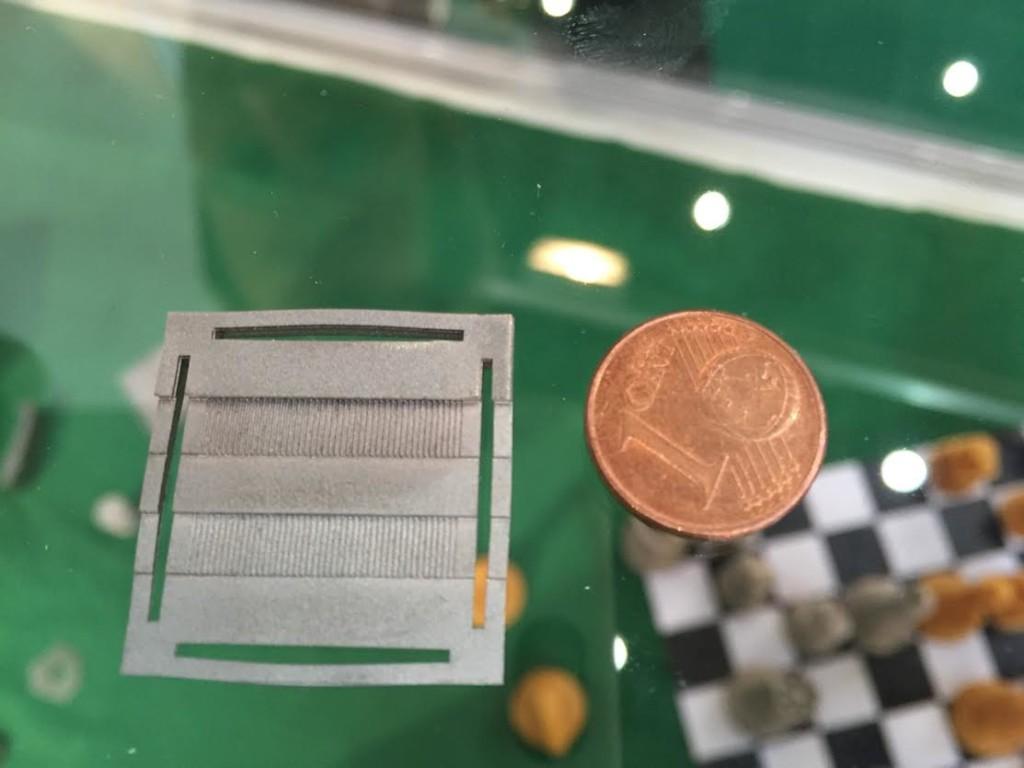 Whenever you are at a show on additive manufacturing, and you see the Fraunhofer Institute stand, you can be sure that if you stop by they are going to show you a new innovative technology or technological approach. Inside 3D Printing/METAV in Düsseldorf confirmed this, as Fraunhofer presented an new manufacturing process for high precision screen printing of metal parts.
Whenever you are at a show on additive manufacturing, and you see the Fraunhofer Institute stand, you can be sure that if you stop by they are going to show you a new innovative technology or technological approach. Inside 3D Printing/METAV in Düsseldorf confirmed this, as Fraunhofer presented an new manufacturing process for high precision screen printing of metal parts.
The process, which was developed in cooperation with Bauer Technologies, allows for mass production of small metallic parts with certain details that could not be produced by SLM or binder jetting powder bed technologies.
“Screen printing is a highly promising process for the manufacturing of small, precise and cost effective metallic parts with closed structures,” explained Sebastian Riecker of Fraunhofer IFAM, the Insitute for Manufacturing Technology and Advanced Materials. “The advantages of this technology is that it enables the production of complex structured parts and many different parts simultaneously. We can use it to shape structures down to a micrometer scale and for applications in various materials systems. The process also offers a high aspect ration and high reproducibility which makes it ideal for mass production.”
Judging by what was on display at the Fraunhofer stand, the advantages do not end here. Riecker showed a set of closed channels for heat exchangers with spaces and walls so thin that would be very difficult or impossible to reproduce by metal powder bed based processes. The final piece does require a heat treatment but no post processing and the surface quality is as close to final shape as it gets.
The cell diameter goes as low as 0.1 mm for any user defined size, while cell height goes from several millimeters to a few centimeters (the technology is not ideal for very tall parts). Wall thickness can easily go as low as 50 micron (with a maximum of 1000 micron).
 Screen printing works with a paste (a “powder/binder slurry”) made up of metallic powders. These can be both atomized, thus perfectly spherical, but also dendritical, which means that they are uneven and yet combine with each other in the paste material. Available materials include stainless steel, copper, titanium, hard metals, PM light alloys and even PM sintered metals. The printable mass goes through an “automated mask generated from a the CAD file” for layer on layer printing.
Screen printing works with a paste (a “powder/binder slurry”) made up of metallic powders. These can be both atomized, thus perfectly spherical, but also dendritical, which means that they are uneven and yet combine with each other in the paste material. Available materials include stainless steel, copper, titanium, hard metals, PM light alloys and even PM sintered metals. The printable mass goes through an “automated mask generated from a the CAD file” for layer on layer printing.
Examples of applications span across all fields where AM is generally implemented, including aerospace, energy management, precision mechanical engineering, electronics and automotive. These include fuel cell components, catalyst carriers, high precision lightweight construction, micro mechanics, heat exchangers and insulation, electrodes, bioimplants and even jewelry.
More and more, 3D printing is shaping into a “state of mind” rather than a technology, with new approaches appearing that cannot be replaced by any other approach. The number of technologies is multiplying rather than consolidating into a few dominate processes and that is because 3D printing is not just a new manufacturing technology but rather an entirely new way of making things, all things. That’s what they do at Fraunhofer.
Subscribe to Our Email Newsletter
Stay up-to-date on all the latest news from the 3D printing industry and receive information and offers from third party vendors.
You May Also Like
Nylon 3D Printed Parts Made More Functional with Coatings & Colors
Parts 3D printed from polyamide (PA, Nylon) 12 using powder bed fusion (PBF) are a mainstay in the additive manufacturing (AM) industry. While post-finishing processes have improved the porosity of...
3DPOD Episode 193: Flow and What’s Possible in 3D Printing with Ricky Wildman, University of Nottingham
Ricky Wildman is working on 3D printing pills, but, as Professor of Multiphase Flow and Physics at Nottingham, he does a whole lot more. His research encompasses the characterization of...
3D Printing Webinar and Event Roundup: March 17, 2024
It’s another busy week of webinars and events, including SALMED 2024 and AM Forum in Berlin. Stratasys continues its in-person training and is offering two webinars, ASTM is holding a...
3D Printed Micro Antenna is 15% Smaller and 6X Lighter
Horizon Microtechnologies has achieved success in creating a high-frequency D-Band horn antenna through micro 3D printing. However, this achievement did not rely solely on 3D printing; it involved a combination...





























